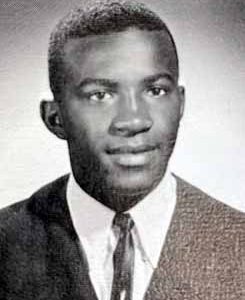
Starting with the 2017 season, the OHSAA will begin assigning each school to a football playoff division using both its current enrollment and an adder that takes into account the number of roster players that arrived at the school via the transfer route. Termed “Competitive Balance (CB),” the goal is to “level the playing field,” particularly with the parochial schools, who are perceived to have an advantage over public schools in drawing area when it comes to securing players. The idea is that moving certain parochial schools up a division will level the field within each division.
Ohio’s football playoff system has been in place since 1972. Throughout its 45 years of existence, the parochial schools have claimed a sizeable number of state championships when compared to public schools, in spite of comprising just 18% of the total school count. In recent years, parochial schools have dominated the playoffs in the upper divisions, capturing 9 of the last 10 titles in D1, 4 of the last 5 in D2, the last 8 in D3 and the last 3 in D4. In 2016, the state title went to a public school only in Division 6. This history of imbalance has caused the ire of many public school administrators and led to a 2012 proposal to conduct separate playoffs for public and parochial schools.
Although a majority of school superintendents approved a referendum to place the proposal on the ballot, the OHSAA intervened fearing that if passed the parochial schools would leave the OHSAA. Thus they engineered a compromise that changed the proposal to an “adder” system. In 2014, the proposal was approved and it is scheduled for implementation starting with the current season.
In essence, if a student from outside the school district enrolls in a public high school, two points are added to the school’s enrollment. If the student had originally enrolled in the school system in the seventh or eighth grade, one point is added. For parochial schools, if a student from a public school enrolls in the high school, two points are added. If a student from a parochial elementary school enrolls in the high school, one point is added. An exception is that a parochial high school may identify a home elementary school and no points are added for any enrollees from that school. The adder can have the effect of moving a school up a single division, but not two.
Here are some observations as CB takes affect:
- For Division 1, splitting the playoffs would have produced a more competitive environment among the public schools. However, CB will only create the potential for adding yet more parochial schools to the division and make it that much harder for the public schools to compete. It’s only a coincidence that no parochial schools were added this year.
- Several schools moved up or down throughout the various divisions, mostly due to changes in base enrollment. However, many parochial schools moved up a division due to the effects of the CB adder. This was likely the intent of the change.
- As expected, the highest CB adders belong to the parochial schools. Top among the group is Lakewood St. Edward, with an adder of 381. In terms of percent change in enrollment, the highest is Toledo Central Catholic (TCC), with an adder of 94%. Interestingly, the change in base enrollment would have dropped TCC from D3 to D4. However, the adder was sufficient enough to move them up two divisions to D2. But per the rules schools can move up only one division. Thus TCC finds itself back in D3. Avid football fans will note that TCC annually dominates its conference, which is comprised primarily of D1 and D2 teams.
- While D1 remains effectively unchanged, D2 got stronger with the addition of Cleveland Benedictine, Akron Hoban, Mentor Lake Catholic and Dayton Carroll, which join holdovers Cincinnati LaSalle, Toledo St. Francis, Toledo St. John’s, Walsh Jesuit and Columbus St. Charles.
- The only large public school to move up a division due to CB was Tiffin Columbian. Tiffin advanced from D3 to D2 on account of a CB adder of 88. Massillon Perry moved up to D1, but this is due only to an increase in base enrollment, not their CB adder of 21.
- Traditional large public school powers Mentor, Toledo Whitmer, Hilliard Davidson, Huber Heights and Cincinnati Colerain do not have open enrollment. Thus, their adders are in the single digits. Of course, they’re D1 anyway.
- Massillon is the 32nd largest school in D2 (104th largest school the state) with an enrollment of 500. With the CB adder, Massillon climbs to the 18th position in D2 (90th in the state), with an adjusted enrollment of 538 or an increase of 8% (7th largest increase among public schools in D2; 189th largest increase among all schools in the state).
- It takes an adjusted enrollment of 618 to qualify for D1. Therefore, with a current adjusted enrollment of 538, it does not appear likely that Massillon will return to D1 anytime soon.
- The OHSAA may need to modify its CB formula in a couple of years after they find little change in the playoff results. Either that or administrators may once again push to split the playoffs.



